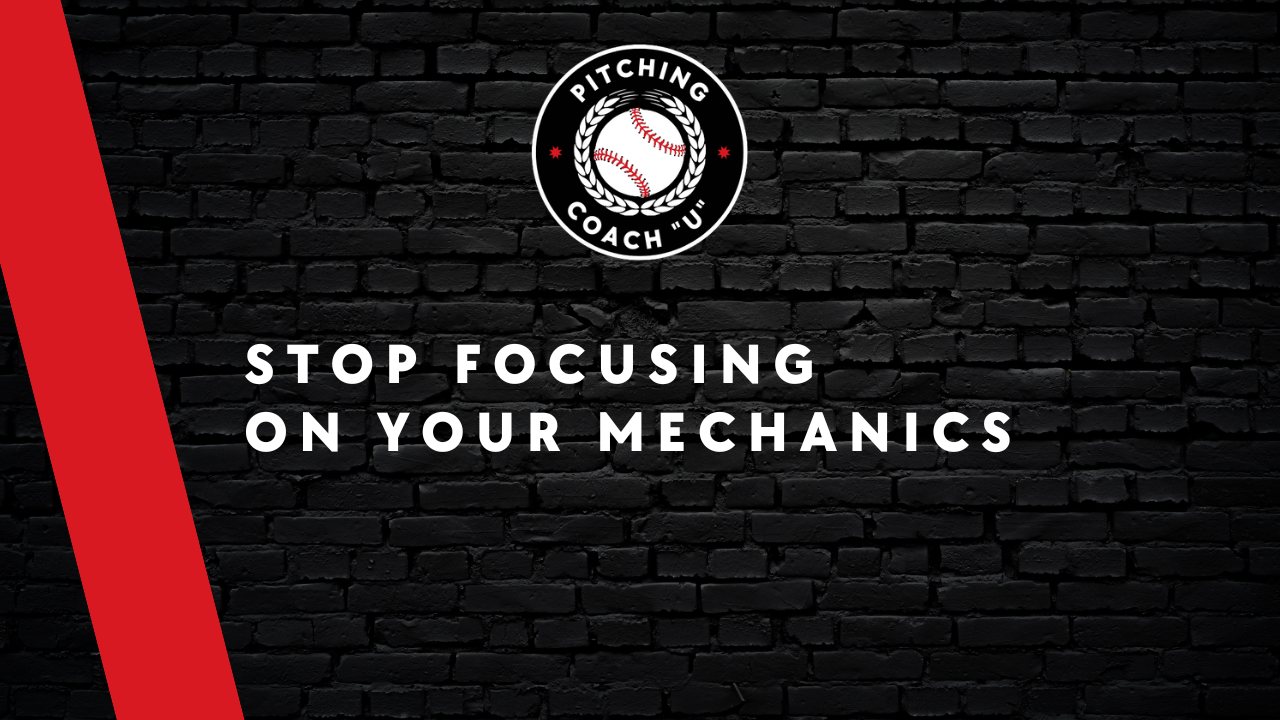
MMV #018: How to develop a pitch in 6-steps
May 01, 2023
Clean Fuego is my favorite tool for improving spin efficiency and the shape of pitches.
The design allows you to get immediate feedback with every throw.
The instant feedback helps improve your pitches faster than ever!
Save 10% on your order when you use code PCU10
Click here to order your set today.
Read time: 3 minutes
Developing a new pitch can seem like a daunting task, at first.
But when you break it down into digestible steps, the end result can be something special.
Today, I am going to walk you through a 6-step process to developing a pitch.
Let's begin.
1. Decide the movement and velocity
Before anything else, you have to figure out what you want the shape and velocity to look like.
The movement should pair well with the rest of your arsenal.
Example:
If you have a sinker and a sweepy slider, you might want to develop a hard gyro cutter to bridge the gap.
2. Have 2-3 grips to try initially
Go into your first training session with a couple grips to experiment with.
Does one feel more comfortable then the rest?
Is one easier to create the movement with?
Tinker with different grips, pressures, and cues.
Click here for access to grip ideas for every pitch type.
3. Catch play progression
Start working on the new pitch in catch play.
Rather than just ripping curveballs right away, create a drill progression to improve it.
Curveball progression example:
Opposite knee down at 20’
- Spin work with softball x5
- Spin work with +5% ball x5
- Spin work with Clean Fuego x5
Opposite foot split stance at 30’
- Spin work with softball x5
- Spin work with +5% ball x 5
Regular delivery at 45-50’
- Spin work with +5% ball x5
- Spin work with baseball x5
Right there you are getting 35 high quality reps.
This will enhance feel for the pitch as time goes on.
Intensity should be low for most of these throws.
4. Pitch design bullpens
Next step is to carry over the work from catch play to a bullpen session.
In this first step, don’t be concerned with the location.
You want to get feel for throwing this pitch and master the shape first.
25 pitch bullpen example:
FB, FB, CB, CB, CB, FB, FB, CB, CB, CB, FB, FB, CB, CB, CB, FB, FB, CB, FB, CB, FB, CB, FB, CB, FB
This is an example of a blocked format, transitioning to more randomized at the end.
12 FB’s and 13 CB’s for a total of 25 pitches.
Even though the curveball is the focus, you still need to throw other pitches like your fastball in this example.
You can adjust the volume as you see fit for that player.
5. Command focus
Once the movement is where you want it, it’s now time to focus on executing the location.
Step 1 is being able to throw it in the strike zone.
As the pitcher shows he can do that at a high rate, split the plate in half.
Depending on the pitch type, you can get more and more specific as needed.
6. Face batters
The last step is to throw it to hitters! This could be in a live BP setting or game.
After throwing it in this setting you’ll have a good idea of what’s working and what isn’t.
Adjust based on what you are seeing in game.
It is normal for the pitch shape to regress slightly in game.
The pitcher is naturally going to do what is natural in a game setting.
You may have to exaggerate cues or feels that work for them in a bullpen.
Additional notes:
This doesn’t all happen in 1 week. It very likely will take several weeks/months before the pitch is dialed in.
Be patient, open to trying new things, and develop a process!
Recap
6-step process to developing a new pitch:
- Decide the movement and velocity
- Have 2-3 grips to try initially
- Catch play progression
- Pitch design bullpens
- Command focus
- Face batters
That's all for today.
See you next week!
Whenever you're ready, there are 2 ways I can help you:
1. If you are looking for something more hands on, I'd recommend starting with one of our affordable services:
→ 1:1 Coaching: Schedule a call and we'll help you design player development plans, bullpen templates, and answer any pitching development questions you have.
→ Mechanical Analysis: We'll analyze your delivery with 20 checkpoints and give you an actionable plan to improve.
2. Join 12,000+ followers for daily threads and tweets on pitching development.
Pitching Coach "U"
The Monday Mound Visit
Teaching coaches how to develop the complete pitcher. Actionable advice delivered to your inbox every Monday.



